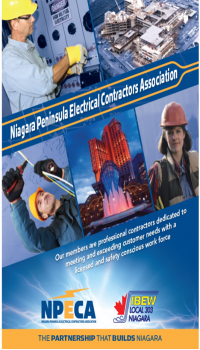
It's bad enough that a fall may kill you, however roofers face an entire host of other on-the-job hazards. Burns from volatile tars and chemicals, electrocution from contact with exposed power lines, and injuries from falling tiles and other roof particles are simply a few of the risks roofers face each day. The United Union of Roofers, Waterproofers & Allied Workers has worked to enhance employee safety for several years, according to John Barnhard, director of research and education. The group has placed a strong concentrate on training. And more defense is required, such as body harnesses, edge guards and rope grabs, which have actually also assisted to lower danger. As a result, fatalities have actually usually trended down considering that 2007, he said. There was a minor spike in 2012. That's when house construction started to get better and lots of brand-new, unskilled roofers came onto the task.
Fall Hazards for Roofers
The most significant danger to roofers is falling, and the injuries they can suffer in a fall. The Center for Construction Research and Training performed research using information from the National Institute for Occupational Safety and Health based upon over 700 construction death reports in between 1982 and 2015. Over those 33 years, the information showed that:
- For roofers, about 75% of fatalities are triggered by falls.- Of those fatalities, 54% did not have access to a Personal Fall Arrest System (PFAS), and another 23% had access to one but did not utilize it.
- Only about one-third of those deaths happened due to falls from 30 feet or greater.
- Overall, 20% of the occupational deaths studied occurred when the employee had less than 2 months of experience on the job.
Taking a look at this information, some shocking things become clear. More than 75% of the fatalities might have been avoided if the victims had been admitted to or utilized a PFAS created to prevent injuries and deaths from falls. The reality that so many deaths occurred early on in the workers' professions shows that much better safety training is needed for brand-new roofers.
Electrocution Hazards for Roofers
The second biggest hazard to roofers is electrocution, which represents about 11% of job-related deaths for experts in the roofing industry. Most of these fatalities were due to coming into contact with overhead power lines while working on a roofing or other elevated location. Wiring or transformers also provide a risk to roofers, especially when electrical lines run along the within a roofing system; and even lightning strikes are a threat that roofers need to be aware of.
Serious Burns and Other Dangers for Roofers
Hot tar is typically used in roof. This tar can sprinkle onto the arms or legs of a roofing contractor, and even be spilled or fall onto people below a work area. Hot tar cools to a solid rapidly on skin, which indicates contact with it triggers a very major burn that is hard to treat. Burns from hot tar frequently lead to hospitalization, and can be fatal in serious cases.
Proper Safety Training and Equipment
While the bad news might be that roofing is the 4th deadliest non-emergency task in the country, the bright side is that lots of deaths and severe injuries can be avoided. Appropriate safety training is the single crucial consider avoiding these deaths-- consisting of how to utilize safety devices and procedures to remain safe on the jobsite. This training requires to take place instantly for new employees, and ongoing training should be used routinely to strengthen great practices.


